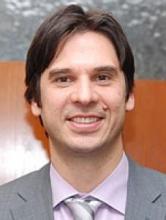Oral And Medical Health Is Linked

Dental care has traditionally been financed and delivered separately from medical care. This is despite the Surgeon General’s 2000 report that emphasized the importance of oral health to whole body health. Now, new data show the consequences of the approach taken in U.S. healthcare policy to oral health.
The American Dental Association Health Policy Institute (HPI) recently launched The Oral Health Care System: A State-By-State Analysis. This first-of-its-kind data repository brings together data from multiple sources related to oral health and is meant to serve policy makers and researchers. One of the most significant findings from these data is that access to dental care has been increasing steadily among Medicaid children for more than a decade.
Nationally, the percentage of Medicaid children who visited a dentist within the past twelve months went from 29% in 2000 to 48% in 2013, the most recent year for which data are available.
In contrast, the trends for adults are very different. The gap in dental care use between Medicaid- and privately-insured adults is much wider than it is for children and has actually increased in several states in recent years. Adults – especially Millennials – are nearly three times more likely than children to report avoiding dental care they need because of cost.
Dental care presents affordability challenges to adults to a much greater degree than any other type of healthcare service. Emergency room visits for dental conditions in the U.S. are on the rise, a trend that is being driven entirely by young adults. Even among adults with private dental benefits, dental care use is declining in most states and the number one reason adults with private dental benefits do not visit the dentist is cost.
The barriers to dental care that adults face are leading to some troubling physical, social, and emotional effects. New data show that more than one out of three low-income adults say they avoid smiling and 17% report difficulty doing usual activities because of the condition of their mouth and teeth.
Looking forward, policymakers and the research community ought to focus on three things to address some of the key challenges facing the U.S. oral health care system.
First, there needs to be a continued and sustained focus on implementing evidence-based policies when it comes to access. The states with the largest gains in access to dental care among Medicaid children over the past decade are those that implemented comprehensive, multi-pronged reforms.
Second, there need to be a rethink of how oral health is defined and measured. The current focus of many government agency data collection efforts is to measure the presence and severity of dental disease and the frequency and type of dental care services people use. There is very little emphasis, in contrast, on measuring the contribution of oral health to physical, social, and emotional well being. These are the ultimate outcomes of interest that any dental care delivery system ought to be designed around.
Third, policy makers need to reconsider how dental care for adults is handled in state and federal policy. Within Medicaid, adult dental benefits are optional and most states provide only basic coverage. Under the Affordable Care Act, dental care for adults is not considered “essential” and thus, dental benefits coverage is not part of the individual mandate. Implementing a comprehensive dental benefit for Medicaid adults in the 22 states that currently lack one is estimated to cost $1.6 to $1.8billion per year. The estimated state portion of this bill translates to about 1% of total Medicaid spending. Compare this to the $1.6 billion spent each year on hospital emergency room visits for dental conditions, one third of which is paid for by Medicaid.
As a former U.S. Surgeon General said, “you can’t be healthy without good oral health.” There is emerging evidence that oral health is related to conditions outside of the mouth, like diabetes, pregnancy, and even mental health. Health care policy in the United States clearly emphasizes the importance of oral health for children. It might be time to reconnect mouth and body for adults.
Marko Vujicic is managing vice president of American Dental Association’s Health Policy Resources Center. A version of this article originally appeared on The Health Care Blog.






